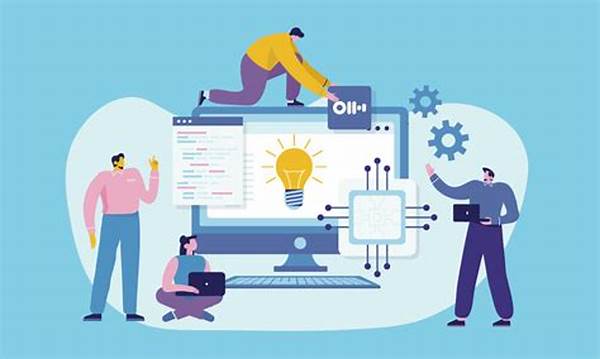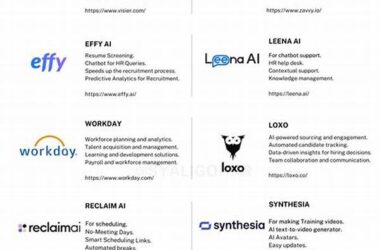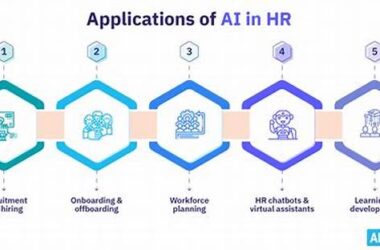I’m glad to assist you with generating content about how AI improves productivity in remote work. Let’s break down and create the content as requested.
Read More : Best Ai Tools For Hr Recruitment In 2025
—
In a world where remote work has become more commonplace than ever, maintaining productivity away from the traditional office environment presents both unique challenges and incredible opportunities. Imagine this: It’s Monday morning. Instead of facing the hustle and bustle of the daily commute, you’re in your cozy home workspace. But the cat’s playing with your keyboard, the fridge is calling your name, and your focus is teetering on the edge of nonexistence. That’s where artificial intelligence (AI) swoops in, like a superhero wearing a lab coat and sporting more data points than you can imagine. How AI improves productivity in remote work is not just a futuristic idea; it’s today’s reality.
The integration of AI into remote workspaces has transformed how we approach tasks, manage time, and collaborate with team members. From virtual assistants scheduling meetings to AI-driven analytics providing insights into workflow efficiency, the tech that was once exclusive to sci-fi movies is at your fingertips—souped-up, ready to boost productivity, and ensure you’re home in time for dinner. AI captures attention by automating repetitive tasks, thereby freeing up mental resources for more creative and critical thinking pursuits.
Moreover, AI systems, such as machine learning algorithms and natural language processing (NLP), assist in managing email overload, sorting through information seamlessly, and offering recommendations for prioritizing tasks. This is crucial when working remotely, as boundaries between work and personal life can blur. AI doesn’t just add to productivity; it’s a game-changer in creating an optimal working environment that engenders creativity and efficiency.
The Role of AI in Enhancing Remote Work Efficiency
The exciting and sometimes mind-boggling ways AI innovates productivity in remote work keep expanding. With AI’s raining insights, it’s like having a thousand coffee-boosted brains working tirelessly behind the scenes. AI tools help negotiate time and task management, ensuring concentration remains unfazed amidst home distractions. Imagine software that not only reminds you of upcoming tasks but analyzes your most productive hours and suggests adjusting your schedule accordingly. It’s not magic; it’s how AI improves productivity in remote work. Here’s to achieving more with less effort.
—
Amid a rapidly evolving digital landscape, remote work deviates from traditional work patterns, necessitating innovative solutions to maintain and elevate productivity. Enter Artificial Intelligence (AI), the technological innovation that has infiltrated—and arguably transformed—the realm of remote work. In a survey conducted by Global Workplace Analytics, up to 30% of the workforce is expected to remain remote post-pandemic, potentially skyrocketing the demand for AI solutions in professional settings.
Remote workers face a myriad of challenges: distractions at home, lack of direct supervision, potential for decreased motivation, and difficulty in maintaining work-life balance. Yet, AI steps in the gap, bridging productivity gaps with precision and finesse. From automating routine tasks to providing personalized insights through predictive analytics, AI acts as both a catalyst and a companion in remote work environments.
Understanding how AI improves productivity in remote work is crucial. It’s not just a matter of convenience; it’s about revolutionizing efficiency. AI-driven applications streamline communication through real-time transcription services and meeting summaries. These enhance concentration and information retention, empowering workers to focus on creative and strategic tasks without the burden of menial duties.
Exploring the Benefits of AI in Remote Settings
The fusion of AI into remote work catalyzes a new era of digital labor, effectively eliminating mundane tasks and maximizing output. AI-powered virtual assistants, like Microsoft’s Cortana or Amazon’s Alexa, assist with task management, scheduling, and other administrative burden. Consequently, employees navigate their to-do lists swiftly, embracing and integrating creativity into their day-to-day work.
AI: Your Proactive Work Partner
AI in remote work not only relieves employees of repetitive tasks; it personalizes the work experience, adapting to preferred work styles and increasing engagement. AI learns how employees work, when they work best, and which workflows are most productive. Adjustments are then suggested, leading to more efficiencies.
Analyzed data helps organizations identify key productivity trends, operational bottlenecks, and areas that need intervention, thereby enabling remote employees to act on these insights promptly. AI acts proactively, offering recommendations based on historical data—turning remote work into a personalized productivity adventure.
—
Implementing AI effectively can multiply productivity in your remote work routine. Here are eight actions to explore different facets of AI integration:
AI’s Influence on Remote Work Dynamics
AI reshapes the remote work arena, with AI-driven tools contributing significantly to efficiency. The seamless integration of these technologies fosters a robust, adaptive, and productive remote workspace paradigm.
—
Visualizing the effects of AI on productivity can fortify understanding. Consider these creative depictions illustrating how AI transforms remote work:
Harnessing these illustrations highlights the multifaceted advantages of AI, transforming abstract concepts into tangible benefits.
—
AI continues to revolutionize how remote work is perceived and implemented. The seamless coordination brought on by AI integrates with human work patterns to yield impressive productivity gains. AI acts as a silent partner, navigating schedules, automating standard tasks, and ensuring that the focus remains on what truly matters—creativity, strategic thinking, and impactful work.
Whether you’re diving into spreadsheets, brainstorming the next big idea, or managing a team across continents, the intelligence at play is profound. AI doesn’t just enhance productivity—it refines it, making every working hour count. As companies continue to embrace remote setups, the investment in AI technologies is not just a nod to innovation but a strategic business initiative.
Maximizing Remote Productivity
AI’s processes are continually optimized, learning and adapting to the users’ needs, pushing productivity thresholds, and redefining work methodologies. Consider how AI improves productivity in remote work by dynamically evolving in response to user behavior, providing real-time analytics, organizing workload efficiently, and even predicting future work trends. With AI, everything is possible—from predictive email sorting to optimizing content creation, effectively leveraging time and skill.
The global workplace benefits significantly from these innovations. AI equips businesses to scale effectively, maintain high productivity levels irrespective of physical presence, and foster an inclusive environment that operates seamlessly across diverse digital ecosystems. Indeed, how AI improves productivity in remote work is more than just today’s topic. It is the silent force that continues to reshape work paradigms, positioning organizations for success now and in the future.
—
I hope this meets your expectations! Let me know if there’s anything else you’d like to enhance or adjust.



